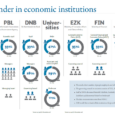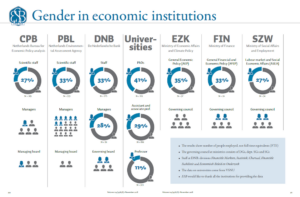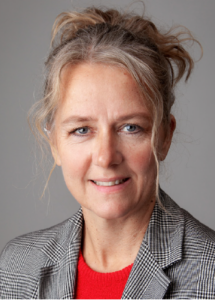The gender gap in economics science is worse than in other disciplines. Are women treated differently than men, in school and during their careers?
Women in economics
Why is this article in English?
This article is part of our English publication ‘Women in Economics’. This dossier is in English because English is the main language of the economics and business faculties in the Netherlands, so an ESB dossier about the people who work there should be in English.
The Dutch version can be found here.
In brief
– Environmental factors and prejudice influence preferences and behaviour.
– Men and women are judged differently, both in education and research.
– The seemingly innocent rules by NWO require policy if we want to combat discrimination.
In 1993, Hein Schreuder argued in ESB that in economics the difference between men and women would automatically disappear: the number of female students was increasing, and ‘from low to high’ this would result in more female doctoral students and academic staff. Eline van der Heijden (1993) had her doubts about this, and enumerated the structural obstacles that women faced when choosing economics and making a career in it.
Ten years later Aart Jan de Geus, the Minister of Social Affairs at the time, also claimed that due to the influx of female students, the difference between men and women as to careers would disappear. As a result, the Dutch newspaper Trouw wrote that the emancipation had been completed, and there was no role left for the government in this respect (Prast, 2016). This ‘pipeline idea’ of Schreuder and De Geus remains a persistent misunderstanding, because there don’t seem to be or have been any facts to support this.
With a mere ten percent of female economics professors in the Netherlands, economics is doing worse than any of the other disciplines. This craves an explanation. In this article, I will look into the influx in economic studies and the careers of economic researchers.
In 1993, Hein Schreuder argued in ESB that in economics the difference between men and women would automatically disappear: the number of female students was increasing, and ‘from low to high’ this would result in more female doctoral students and academic staff. Eline van der Heijden (1993) had her doubts about this, and enumerated the structural obstacles that women faced when choosing economics and making a career in it.
Ten years later Aart Jan de Geus, the Minister of Social Affairs at the time, also claimed that due to the influx of female students, the difference between men and women as to careers would disappear. As a result, the Dutch newspaper Trouw wrote that the emancipation had been completed, and there was no role left for the government in this respect (Prast, 2016). This ‘pipeline idea’ of Schreuder and De Geus remains a persistent misunderstanding, because there don’t seem to be or have been any facts to support this.
With a mere ten percent of female economics professors in the Netherlands, economics is doing worse than any of the other disciplines. This craves an explanation. In this article, I will look into the influx in economic studies and the careers of economic researchers.
Preferences and behaviour
Economists traditionally assume that behaviour reveals preferences, and they regard preferences as given facts. Although understandable as an initial hypothesis, this does not do justice to existing knowledge, also in economics, about the influence of environmental factors and prejudice as to preferences and behaviour. Three examples in economics can illustrate this bias.
First, Huberman (2001), inspired by Merton (1987), explains the investor home bias as ‘familiarity’: people more often opt for shares in companies that are literally or figuratively close to home. As a consequence, not only do they diversify their financial capital insufficiently, they also place too many eggs in the basket in which their human capital is invested. Secondly, in a Harvard Business Case, Avery (2012) shows that Coca Cola misjudged the use of the word Diet in Diet Coke: men did not buy it, because the word ‘diet’ evokes a realm unbefitting to the stereotypical man. However, Coke Zero does not have that problem. Thirdly, there is a significant difference between men and women as to their self-declared financial risk attitudes. Nevertheless, when risk attitude is measured objectively, on the basis of skin reaction, there is no difference and women are just as risk-tolerant as men (Brighetti and Lucarelli, 2015). Apparently, women fill out the questionnaire in a way that is expected of them, which is due to the stereotyping effect.
To what extent can such factors contribute to the gender gap in economics science? First of all, a few facts.
Economics in secondary education
Over half of the university students in the Netherlands are women – but, with approximately 35 percent of female economics students, their share in economics is a lot lower than that. Since almost all graduates with a pre-university education (vwo) meet the admission requirements for studying economics, it is obvious to attribute this diversity to a congenital or biological gender difference as to preference. Such an explanation assumes that the context in which decisions are made is neutral, though this is, as is shown by behavioural sciences, hardly ever the case.
Box 1: The vwo final economics exam (2016–2018)
1a. The sexes in the exam
Men (26)
Economist (11×)
Director of a football club
Director of a pension fund
Managing director of an online stock broker’s
Managing director of a theatre
Manager multi-storey car park
Manager of a telecom company
Researcher (2×)
Governor of the Central Bank
Minister of transport
Egg farmer
Journalist
Investor
Friend of investor
Employee with an income of 50,000 euros
Women (6)
Welfare recipient
Friend of welfare recipient
Journalist
Economics teacher
Saver with negative net return
Spokeswoman of Consumers’ Association
1b. Companies and products in the exam
Multi-storey car park
Second-hand cars
Car manufacturer
Toll tunnel
House (3×): renting, buying, mortgage
Football club
Physiotherapy
Pharmaceuticals
Mobile telephony
Eggs
Airbnb
In order to demonstrate this bias, Box 1a presents the sexes and professions mentioned in the final exams for economics in 2016–2018. These are the individuals explicitly indicated as being male or female (he/she, his/her). If the gender is unclear, the person is not included.
In these exams, 26 men and 6 women appear. The women include a welfare recipient, her girl friend, an economics teacher, a journalist, a spokeswoman for the Consumers’ Association, and a woman with a negative net return on her savings account. Most men in the exams are economists, directors, ministers or governors of central banks.
The products mentioned in the final exam also evoke a man’s world. Men and women differ in their consumer expenditure (Figure 1). The biggest difference is cars (m >> f), followed by personal care (f >> m), and computers and accessories (m >> f).
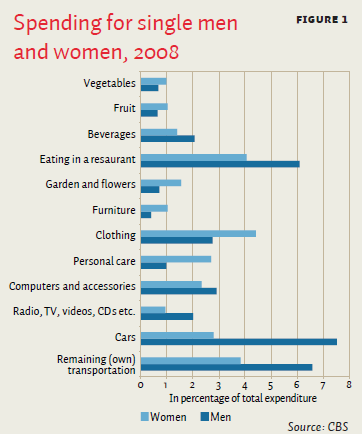
Box 1b gives an overview of the companies and products mentioned in the exams (not including financial products). If we consider mobile telephony to be included in ‘computers and accessories’, men’s favourite products are mentioned five times and women’s favourite products not at all. Furthermore, football is mainly associated with men as to sports (SCP, 2009; CBS, 2010).
The exams evoke an image of a world in which men achieve a lot, and women little. In addition, being an economist is something for men, and also the spending and use of time refers to men. In itself, this might already influence the attitude of girls towards economics negatively. Activating a stereotype, which these exam questions seem to do, leads to people behaving accordingly, to wit stereotypically (Wheeler and Petty, 2001), and lowers women’s self-confidence in areas that are associated with men. Stereotyping therefore influences performance, study choice and career (Carlana, 2018; Lavy and Sand, 2015). Nosek et al. (2009) compare 34 countries and find that scientific gender bias – measured by the extent to which people tend to associate alpha-studies more with women and beta studies more with men – is largest in the Netherlands.
The stronger a teacher has a stereotypical notion about pupils, the stronger her or his confirmation bias will be – the degree to which he or she filters and weighs up information about the pupil so that it confirms the stereotype judgment (Bordalo et al., 2016). It seems that the authors of these exam questions – economics teachers – have a stereotypical image of the sexes.
Box 2 shows the composition of the committees advising upon the final exam programme for economics, and the external experts they have consulted (Teulings, 2002; Commissie-Teulings I, 2002; Commissie-Teulings II, 2005). Women are a minority here, none of them have graduated in economics, and they have all adopted their husband’s name.
Composition of advisory committees for the vwo economics programme
Teulings-1 (2002)
Prof. Coen Teulings Male
Prof. Eric van Damme Male
Prof. Hugo Keuzenkamp Male
Dr Henk Don Male
Dr Sierk Keuning Male
Els Borghols MSc Female
Dorien Klarenbeek MSc Female
A. Wels MSc unknown
External collocutors:
Prof. Arnoud Boot Male
Prof. Arnold Heertje Male
Prof. Jan Klaassen Male
Prof. Frans Leijnse Male
Prof. Piet Coppieters Male
Dr Louise Gunning Female
Dr Alexander Rinnooy Kan Male
Dr Herman Wijffels Male
Chiel Renique MSc Male
Jan Klaver MSc Male
Marc Mittelmeijer MSc Male
Teulings-2 (2005)
Prof. Coen Teulings Male
Prof. Eric van Damme Male
Prof. Jules Theeuwes Male
Loes Broer-Nieuwenhuis MSc Female
Dorien Doornebos-Klarenbeek MSc Female
Leon Knoben MSc Male
Kees Blokker MSc Male
Jos Steins MSc Male
Eric Welp MSc Male
External advisors:
Prof. Lans Bovenberg Male
Prof. Rick van der Ploeg Male
Prof. Sweder van Wijnbergen Male
The first committee (rightly) advocated a broadening of the economy’s domain, giving as an example the division of tasks in the household. The second narrowed this down by explaining why women do more household chores than men, using the theory of comparative advantages. Moreover, they used the example of the man who marries his housekeeper to illustrate that GDP is an imperfect measure. The evaluation of the VWO Economics Examination Programme (2011) does indeed include a chapter on the exam, but it does not include any mention of the sexes that crop up in the exam. In Van Dalen and Koedijk (2012), fourteen economists give their view on economics education. Thirteen of them are Dutch males, the fourteenth is a non-Dutch author who has become a woman. The illustration on the cover is a shirt and tie.
Study choice
By no means do all students who are able to study economics take the vwo economics exam. That is why it is also important to look at what students encounter when they orientate themselves towards economics studies. An inventory of the texts in which the universities and economics faculties in our country describe and recommend the economics studies shows that they are generic, with terms such as ‘broad’, ‘social’, ‘macro’, ‘meso’, ‘micro’, ‘current issues’, ‘many perspectives’, or with specific emphasis on business, growth, cost prices, stock exchange and market forces. Scarcity of raw materials, labour-market participation, climate, unemployment, social security, income distribution and pensions are not included in these descriptions, although they are not the least challenges as regards a discipline that deals with the allocation of scarce resources. Growth, prosperity and power are masculine, while care, sharing and wellbeing are feminine values (Hofstede, 2001). The wage gap between the sexes is also lacking, even though the Netherlands is left dangling under The Economist’s glass ceiling index for OECD countries (The Economist, 2018) and you would expect that studying it would be worthwhile for economists.
In short, the field of economics seems not particularly attractive for girls in secondary school. How, then, do women fare who actually choose economics?
University
In the grades of first-year economics students, there is actually no gender difference (Arnold and Roowaan, 2014). Moreover, women graduate more quickly, and forty percent of the economics PhD students are female (see Teunissen and Hogendoorn, in this dossier). So, are there other factors to explain why the percentage of female professors in economics is still so low?
Wu (2017) analyzes the words used by those who visit the Economics Job Market Rumors, an online forum where PhD students anonymously exchange information about the labour market, referring in doing so to men and women respectively. This forum gives the impression that visitors see their field as masculine and are proud of it, even though economics is essentially about allocation, distribution and welfare as a measure of well-being. This does not mean, however, that all economists talk about women in this way, nor that PhD students in economics look down on women more than PhD students in other fields.
Leading scientists also make statements that show a certain opinion about the qualities and preferences of women. Larry Summers doubts whether women have sufficient beta capacities and suggests that they were born to care of children (The Guardian, 2005). For that reason he had to resign as President of Harvard. In the Netherlands, former KNAW chairman Hans Clevers recently admitted that the gender balance in science is a problem: “But it’s because of the women, we have a lot of young women with potential, but when push comes to shove, they quit. That’s something we [the men] can do nothing about. Dutch women do not want to take the extra step.” (NOS, 2018)
Career differences
Various scientific studies have been carried out which suggest that men and women in economics are judged differently. This applies to both education and research.
Education
Female economics teachers receive lower evaluation scores than men. This is because male students grade them worse, although there is no difference in the knowledge acquired by students (Boring, 2017). Male economics students grade identical study material as worse if their working group teacher is a woman, and are also less satisfied with the speed of review, although all grades are announced at the same time (Menger et al., 2017). This difference is even greater in economics courses where mathematics plays a role. That bias is a factor here is also apparent from Macnell et al. (2015), because they find that students evaluate the teacher of an online course with higher grades if they think it’s a man.
A lesser educational evaluation can, directly as well as indirectly, adversely affect the scientific career of women in economics. Female economics scientists spend more time on education and less on research than men do (Link et al., 2008). After all, those who receive a lower score will spend more time preparing their classes, which will go at the expense of research. Moreover, low scores can make women insecure and demotivate them, as they confirm the bias that women and economics form a lesser combination, and they can offer an argument to not promote a women to a permanent position.
Research
Women in economics seem to have to meet higher standards than men in order to get their article published. Hengel (2017) compares the readability of articles in American Economic Review, Econometrica, Journal of Political Economy and The Quarterly Journal of Economics and their earlier working paper versions on the basis of quantitative standards (Box 3).
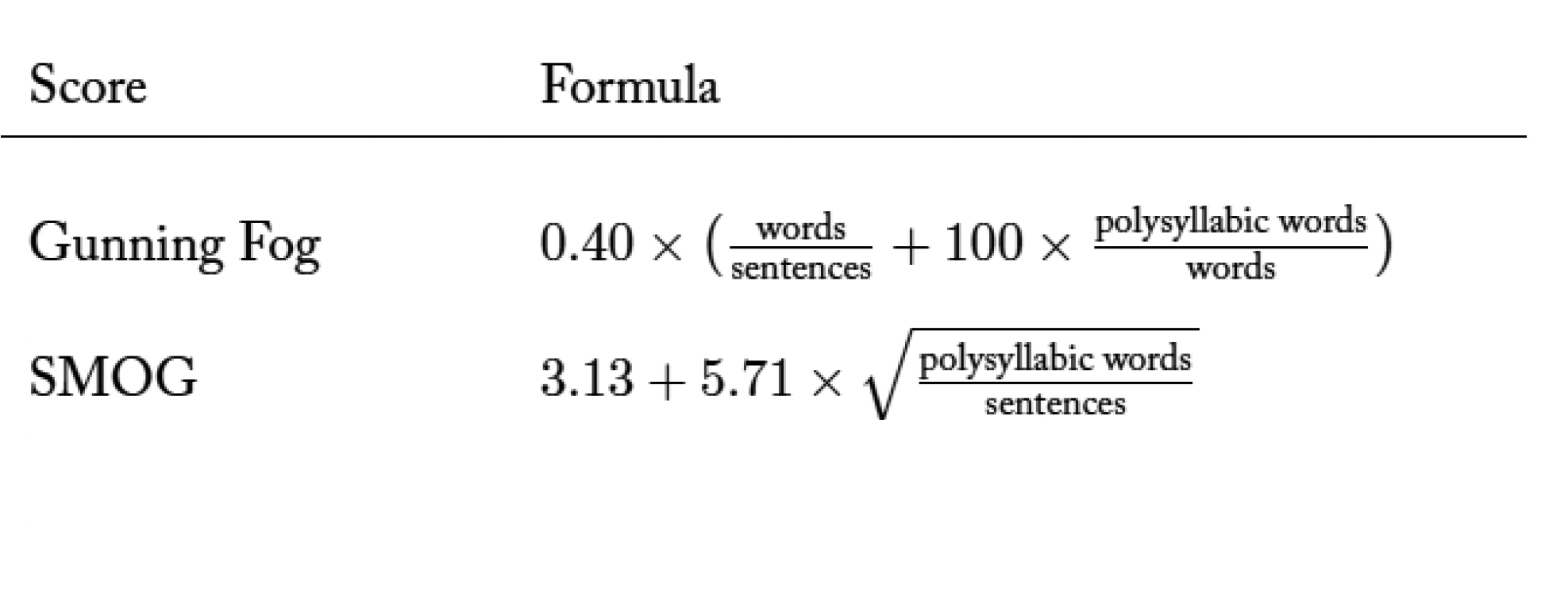
According to these standards, both the articles and the working paper versions of female authors are easier to read than those of men, and the difference is the largest in the final version. So, women take more steps to improve their papers, although their first version was already more readable. That takes time, because the average time between the working paper and final version is longer for articles by female authors. The extra time that women spend on rewriting cannot be spent on new research, which may result in realizing less research output than men do.
Other tasks
Compared to men, women in science devote more time to activities that are important for the department,
faculty or university, but not for their own scientific career (McLaughlin Mitchell and Hesli, 2013; Porter, 2007). Is this due to preferences? Babcock et al. (2017) conclude that it is not. They compare the behaviour of male and female economics students in a mixed group with the behaviour in a group with only their own sex. In the mixed group, women volunteer significantly more often than men. As such, this might indicate a difference in preferences between the sexes, were it not that women in a group with only women behave in the same way as men in a group with only men. Apparently there is no difference in within-group preferences, but the women are expected to volunteer more often, which in a mixed group is a ‘self-fulfilling prophecy’. Babcock et al. (2017) also find that faculties and departments more often ask women than men to perform tasks that are not helpful to a career in science.
Hiring and promotion
On top of the fact that the aforementioned factors ay have the that women with the same qualities can build up a resumé that is not as good, there is the risk that exactly the same resumé will be less well assessed if it is by a woman. This has been demonstrated in many previous studies regarding different professional groups. For the exact sciences, Moss-Racusin et al. (2012) find that the judgment of beta scientists as to the resumé of a hypothetical candidate varies, depending on whether they think it is by a man or a woman: ‘men’ score higher on competence, ‘hirability’ and the salary earned.
Research proposals
Committees of the Netherlands Organisation for Scientific Research (NWO) assess women’s research proposals similarly as those of men (Van der Lee and Ellemers, 2015), but less often accept their applications (14.9 and 17.7 percent respectively), especially in the Social and Behavioural Sciences (including economics), Earth and Life Sciences, and in Medical science.
The reason is that they undervalue female applicants. This may be due to the gender bias illustrated above, but the NWO rules and forms do not help either. The pre-notification forms for Veni, Vidi and Vici grants require a number of years since promotion and are bestowed according to the type of contract (temporary, permanent), but not for the scope of the employment, and the output also does not correct for length of employment and for absence due to pregnancy and childbirth. However, the applicant must only fill in the number of months of ‘care or sick leave’ or ‘leave’, which means that her absence due to bearing children is treated the same as illness and is therefore a defect. Because evaluators in the preliminary round only see the number of publications, uncorrected as to employment, they will underestimate the relative productivity of women, and overestimate that of men.
Furthermore, funding for Vidi and Vici research can be requested up to eight resp. fifteen years after promotion, regardless of the employment’s size. What also does not help are the characteristics as to which the applicants must be assessed according to the NWO forms. Gaucher et al. (2011) show that job advertisements in sectors where there are mainly men working, describe the candidate’s desired characteristics differently than in sectors in which mainly women work. The terms with which assessors must assess the NWO applicants are generally of the first type, and refer to the male stereotype: ‘challenging’, ‘excellent’, ‘outstanding’, ‘adventurous’, which makes men seem to meet the set requirements more. Moreover, the use of language is based on a male candidate: “is part of the top in his field” (Van der Lee and Ellemers, 2015).
Policy implications
The most common explanations for the gender gap in economics – namely that women have different preferences and other capacities, respectively that there is a pipeline effect – lead to the conclusion that policies are unnecessary. However, there is no scientific basis for this claim. The existing scientific research and anecdotal evidence point in the direction of an implicit gender bias, especially among male economists, with consequences for study choice, assessment of women in economics, and the allocation of tasks. The seemingly innocent rules applied by NWO even go a step further. These do require policy if we want to combat discrimination and the suboptimal use of human capital (Box 4).
Policy recommendations
– Further research into the positioning of men and women in economics texts (study material and exams)
– To take into account implicit gender attitudes within adoption and promotion policies and in membership assessment committees
– The screening of NWO application and assessment forms as to implicit discrimination (masculine qualifications and correction for size of the appointment)
– To abolish or correct education evaluations as to gender bias before sharing results
– Composition of advice committees and experts on economics education, explicitly choosing those who challenge the stereotypical image instead of confirming it: more women than men; female professors and graduates; female doctoral students
– Gender bias and (self-)stereotyping, and the consequences of this for economics in the VWO exam programme and for the university degree in economics
– A gender quota for women in economics
References
Arnold, I.J.M., and I. Roowaan (2014) First-year study success in economics and econometrics: The role of gender, motivation, and math skills. Journal of Economic Education , 45(1), 25–35.
Avery, J. (2012) Defending the markers of masculinity: Consumer resistance to brand gender-bending. International Journal of Research in Marketing, 29(4), 322–336.
Babcock, L., M.P. Recalde, L. Vesterlund and L. Weingart (2017) Gender differences in accepting and receiving requests for tasks with low promotability. American Economic Review, 107(3), 714–747.
Bordalo, P., K. Coffman, N. Gennaioli and A. Shleifer (2016) Beliefs about gender. NBER Working Paper, 22972.
Boring, A. (2017) Gender bias in student evaluations of teaching. Journal of Public Economics, 145, 27–41.
Brighetti, G., and C. Lucarelli (2015) Gender differences in attitudes towards risk and ambiguity: when psycho-physiological measurements contradict sex-based stereotypes. International Journal of Entrepreneurship & Small Business, 24(1), 62–82.
Carlana, M. (2018) Implicit stereotypes: evidence from teacher’s gender bias. IZA Discussion Paper, 11659.
CBS (2009) Klassiek rolpatroon in uitgaven alleenstaande mannen en vrouwen, 21 december. Publication available at www.cbs.nl.
CBS (2010) Grote verschillen in sportbeoefening tussen mannen en vrouwen, 14 april. Publication available at www.cbs.nl.
Commissie-Teulings I (2002) Economie moet je doen – eindrapport commissie Teulings I. Available at vakdidactiek-ae.nl.
Commissie-Teulings II (2005) The wealth of education – advies van de commissie. Available at www.experimentenvoorindeklas.nl.
Dalen, H. van, and K. Koedijk (eds.) (2012) Nieuwe kijk op economie gevraagd: visies op het economieonderwijs. Article available at www.mejudice.nl.
Gaucher, D., J. Friesen and A.C. Kay (2011) Evidence that gendered wording in job advertisements exists and sustains gender inequality. Journal of Personality and Social Psychology, 101(1), 109–128.
Ginther, D.K., and S. Kahn (2004) Women in economics: moving up or falling off the academic career ladder? The Journal of Economic Perspectives, 18(3), 193–214.
Heijden, E. van der (1993) Vrouwen in de economische wetenschap. ESB, 78(3918).
Hengel, E. (2017) Publishing while female: are women held to higher standards? Evidence from peer review. University of Cambridge. Available at www.repository.cam.ac.uk.
Hofstede, G.H. (2001) Culture’s consequences: comparing values, behaviors, institutions and organizations across nations. Thousand Oaks, CA: Sage Publishers.
Huberman, G. (2001) Familiarity breeds investment. The Review of Financial Studies, 14(3), 659–680.
Lavy, V., and E. Sand (2015) On the origins of gender human capital gaps: short and long term consequences of teachers’ stereotypical biases. NBER Working Paper, 20909.
Lee, R. van der, and N. Ellemers (2015) Gender contributes to personal research funding success in The Netherlands. Proceedings of the National Academy of Sciences, 112(40, 12349–12353.
Link, A.N., C.A. Swann and B. Bozeman (2008) A time allocation study of university faculty. Economics of Education Review, 27(4), 363–374.
MacNell, L., A. Driscoll and A.N. Hunt (2015) What’s in a name: exposing gender bias in student ratings of teaching. Innovative Higher Education, 40(4), 291–303.
McLaughlin Mitchell, S., and V.L. Hesli (2013) Women don’t ask? Women don’t say no? Bargaining and service in the political science profession. PS: Political Science & Politics, 46(2), 355–369.
Menger, F., J. Sauermann and U. Zölitz (2017) Gender bias in teaching evaluations. IZA Discussion Paper, 11000.
Merton, R.C. (2003) Thoughts on the future: theory and practice in investment management. Financial Analysts Journal, 59(1), 17–23.
Moss-Racusin, C.A., J.F. Dovidio, V.L. Brescoll et al. (2012) Science faculty’s subtle gender biases favor male tudents. Proceedings of the National Academy of Sciences of the United States of America, 109(41), 16474–16479.
NOS (2018) Bepaalt een kleine mannenkliek het kankeronderzoek in Nederland? 10 October. Article available at nos.nl.
Nosek, B.A., F.L. Smyth, N. Sriram et al. (2009) National differences in gender–science stereotypes predict national sex differences in science and math achievement. Proceedings of the National Academy of Sciences of the United States of America, 106(26), 10593-10597.
Porter, S.R. (2007) A closer look at faculty service: What affects participation on committees? The Journal of Higher Education, 78(5), 523-541.
Prast, H. (2016) Nog niet volbracht: een sociaal-liberale emancipatie-agenda. In: T. de Graaff and A. Rinnooy Kan (eds.), Redelijk radicaal. Amsterdam: Uitgeverij Balans.
Schreuder, H. (1993) Met man en macht. ESB, 78(3913).
SCP (2009) Factsheet rapportage sport 2008. Data available at www.scp.nl.
Teulings, C.N. (2002) Economie moet je doen. ESB, 87(4377), 700–702.
The Economist (2018) The glass-ceiling index. The Economist, 15 February.
The Guardian (2005) Why women are poor at science, by Harvard president. The Guardian, 18 January.
Wheeler, S.C. and R.E. Petty (2001) The effects of stereotype activation on behavior: a review of possible mechanisms. Psychological Bulletin, 127(6), 797–826.
Wu, A.H. (2017) Gender stereotyping in academia: evidence from Economics Job Market Rumors Forum. Publication available at www.aeaweb.org.
Auteur
Categorieën
